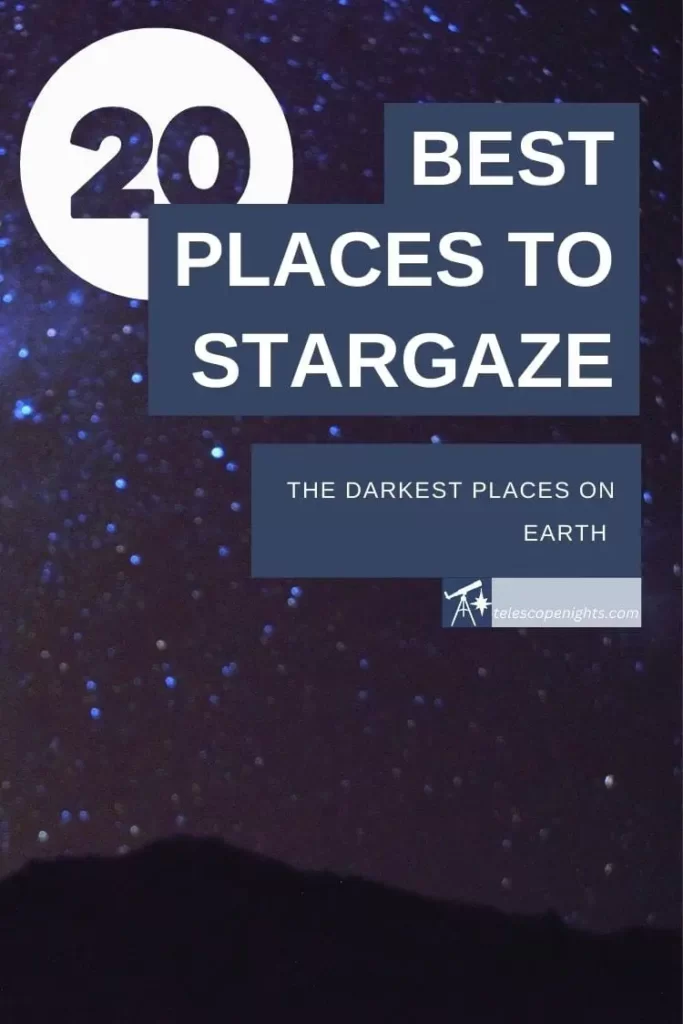If you’re looking to get away from the light pollution there are several dark sky places to enjoy the ultimate stargazing experience. Here are some fantastic options for you, including those said to be the darkest places on Earth to experience the best night sky viewing.
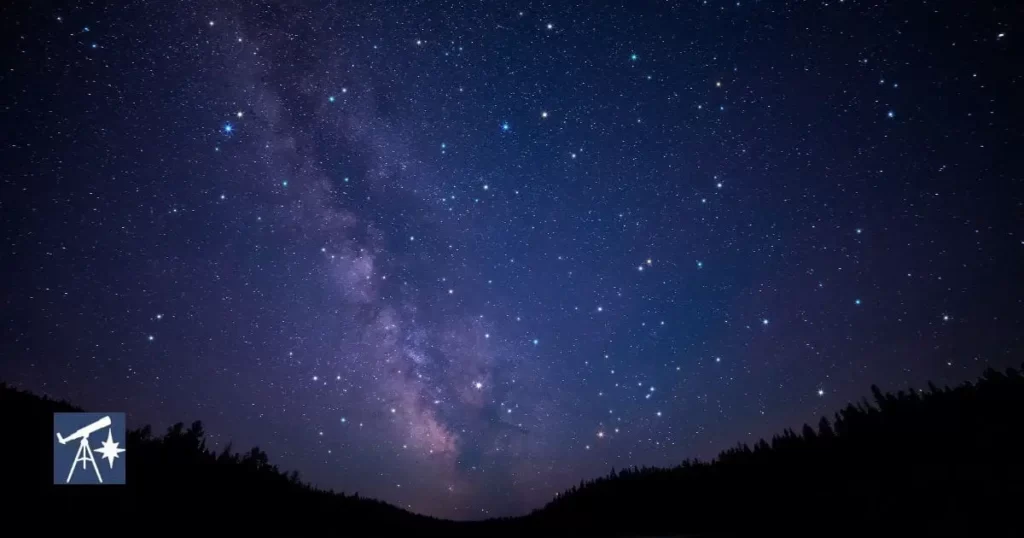
Where are the darkest places on Earth to stargaze?
The darkest places on Earth include Dark Sky Parks and Reserves such as the Grand Canyon-Parashant National Monument in Arizona, the Aoraki Mackenzie International Dark Sky Reserve in New Zealand, and the Massacre Rim Wilderness Study Area in Nevada, USA. But there are many more…
Many places in the world have dark skies. As a rule, you’ll find deserts, national parks, and high-altitude areas are the darkest places on Earth. They’ll provide you with an awe-inspiring experience compared with what you’ll get with cityscapes.
I find I get to see much more of the night sky when out in the National Parks. Whereas you might get to see 100 or so stars at best with your unaided eyes in the city, on a moonless night in a dark location, you can see up to 5000.
21 Best Dark Places to Stargaze Across the Globe
There are many Northern Hemisphere sites that qualify as the best stargazing spots in the world and I start with those. But stargazers in the southern hemisphere will see the ‘density’ of the Milky Way and its features in the dark skies of this part of the world.
I’ve thrown several into the ring as the best dark areas for stargazing. In these parts, you’ll see constellations only seen in the southern skies. And you’ll get to see a whole different perspective of the Moon.
>> Jump to southern hemisphere dark sky locations
Northern Hemisphere darkest skies
The northern hemisphere offers some of the best locations for stargazing and astrophotography, with many designated Dark Sky Parks and Reserves that provide exceptional views of the night sky.
It’s home to some of the brightest stars and constellations, such as Orion and the Big Dipper, which are easily visible and recognizable even in urban areas with some light pollution (source: EarthSky).
By visiting and supporting Dark Sky Parks and Reserves, you can help raise awareness about light pollution and the importance of preserving dark skies for future generations (source: International Dark-Sky Association).
Let’s start with the best places to stargaze in the US…
Massacre Rim Wilderness Study Area in Nevada, USA
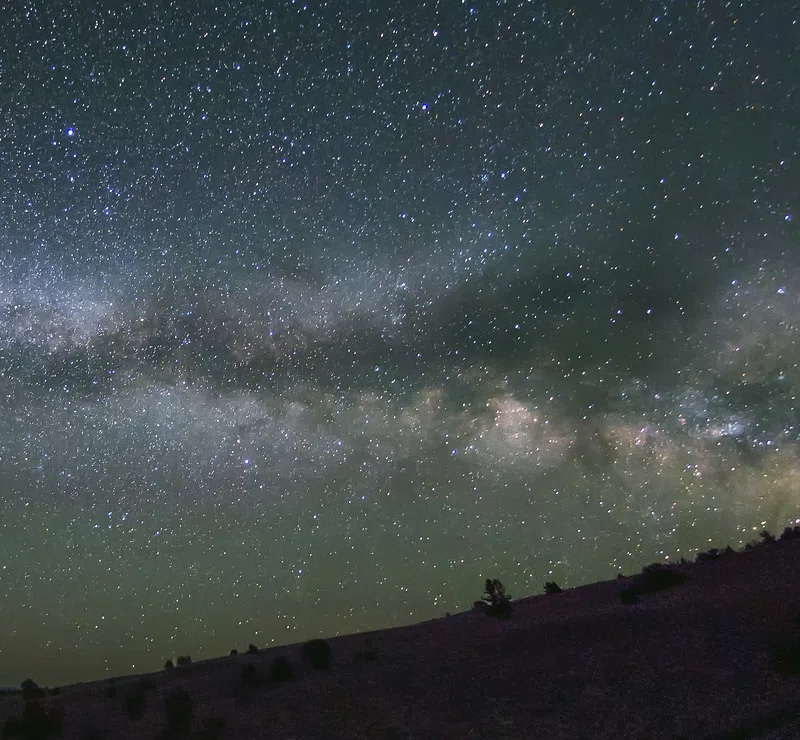
Many consider the Massacre Rim Wilderness Study Area the darkest place on Earth to view stars.
The area is remote and offers little to no light pollution, providing a pristine mountain night sky environment (source: Travel Nevada).
As a designated Dark Sky Sanctuary, it’s recognized for its exceptional quality of starry nights and nocturnal environment (source: Bureau of Land Management).
It offers camping and hiking opportunities, allowing visitors to experience the natural beauty of the region during the day and the night. It’s a rugged area, which may make it difficult to access and navigate for some visitors.
Watch out for extreme weather conditions, including high winds, snow, and thunderstorms, and be mindful of wildlife, including mountain lions. Take the necessary precautions and plan your trip accordingly. The area is subject to seasonal closures and restrictions.
High Volcanoes of Hawaii

You’ll find a world-leading observatory along with the volcanoes on the Big Island of Hawaii, so it must be one of the best places for astronomy!
“The summit of Mauna Kea on the Island of Hawaii hosts the world’s largest astronomical observatory, with telescopes operated by astronomers from eleven countries”, according to the University of Hawaii.
Why is this the best place to see stars, so much?
- The summit area is extremely dry.
- A tropical inversion cloud, about 600 meters (2,000 ft) thick, sits well below the summit, isolating the upper dry air from the lower moist atmosphere beneath.
- It is cloud-free with the chances of a clear night sky among the highest in the world.
Not only is it away from city lights, but the island itself has a lighting practice that maintains an extremely dark sky. The beautiful night sky from a volcano summit of the Big Island is guaranteed to be pure, dry, and free from atmospheric pollutants.
Visitors can stargaze from a designated level. Even so, you need to be a lover of high altitudes and cold temperatures for this one with the best viewing at 9-10 thousand feet.
National Parks of SW United States
There are a few US dark sky park options to choose from that are seasonally optimal for stargazing. These range from
- Acadia in the Northeast to
- Mount Rainier in the Northwest,
- Yellowstone in Wyoming,
- The Badlands in South Dakota, and
- Big Bend in Texas.
In 2007, the Natural Bridges National Monument in Utah became the world’s first designated dark-sky park. Glacier Point in Yosemite is a popular summer viewing location for amateur astronomers.
Death Valley Stargazing, USA
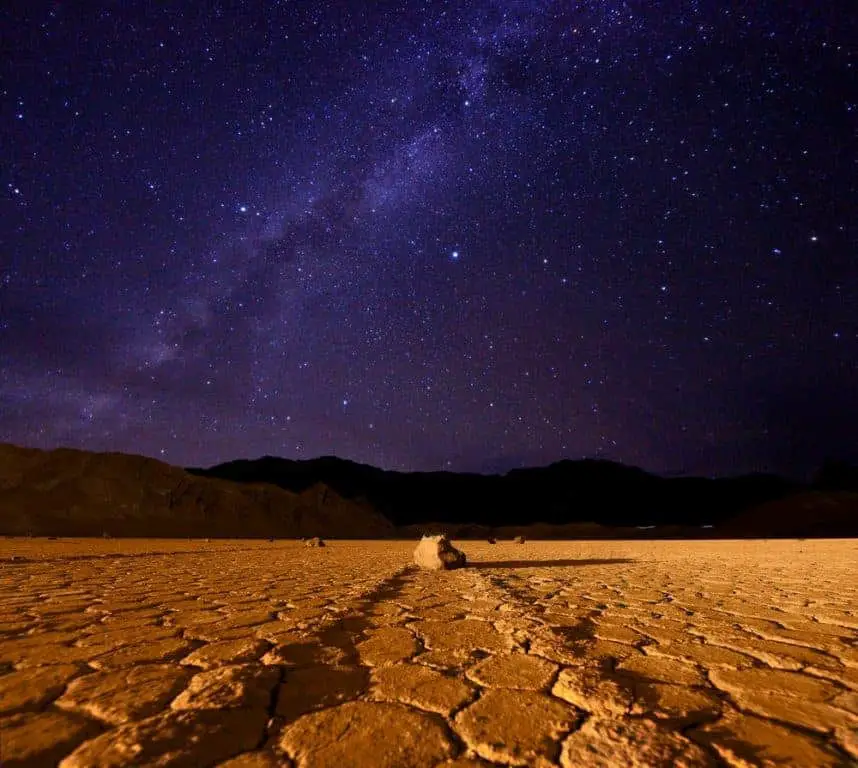
Death Valley is a vast and stunning national park located in the southeastern part of California, United States. It is situated approximately 130 miles northwest of Las Vegas and covers an area of about 3,000 square miles.
It is one of the most famous (or infamous) desert areas in the world. While its dusty expanse might be home to some of the hottest temperatures on Earth, it’s also perfect for stargazing.
The clear, dark skies of Death Valley offer a breathtaking view of the Milky Way galaxy, the Orion Nebula, and other celestial objects that are not usually visible in urban areas. The park also has several designated stargazing areas where visitors can set up telescopes and observe the stars and planets. Additionally, the park’s high altitude of about 3,000 feet above sea level and dry climate make it an ideal location for stargazing, as there is minimal atmospheric distortion or obstruction.
Death Valley has accommodations fitted out with sky-friendly lights to attract the sky-watchers.
When it comes to stargazing best spots are often determined by how far away from the bright lights of the city they are, and Death Valley is far from the cityscape of Los Angeles and San Diego.
Arizona Sky Village, USA
Arizona Sky Village is located in the southwestern United States, in the state of Arizona. The 450-acre purpose-built village is nestled beside the Chiricahua Mountains, near the town of Portal. The closest big city is Phoenix, which is about 250 miles (400 kilometers) away.
Astronomers, amateur stargazers, and photographers from all over the globe come to this place for its spectacular night sky views. The village’s high altitude and dry climate provide for clear and stable atmospheric conditions, allowing for crystal-clear views of the stars.
What makes this place even more special is the village’s ‘no outdoor light’ rule. There may not be much to do here in the daytime but the night is abuzz with activity.
Also in Arizona, is the Grand Canyon-Parashant National Monument.
It’s one to add to your bucket list – America’s most famous natural wonder also offers one of the best views of the night sky of anywhere in the Continental US.
Central Idaho US Dark Sky Park, Idaho, USA
Central Idaho US Dark Sky Park is located in the heart of Idaho, in the United States. Stretching for more than 1,400 square miles, the Central Idaho Dark Sky Park is one of the best-regarded stargazing locations in the US.
This part of Idaho has done a remarkable job of protecting the quality of its clear bright skies.
In addition to the incredible stargazing opportunities, Central Idaho US Dark Sky Park also offers a number of other activities for visitors. These include hiking, camping, and wildlife viewing. The park is home to a wide variety of plants and animals, including elk, deer, and bighorn sheep.
When it comes to stargazing the best places, it is often a matter of location, and this spot in central Idaho is simply the perfect place to catch many of the finest stellar shows North America has to offer.
La Palma, Canary Islands
La Palma is one of the seven Canary Islands located in the Atlantic Ocean off the coast of northwest Africa. It is a Starlight Reserve, which means the island has committed to preserving its dark sky for stargazing.
It is situated closer to the equator than most other popular stargazing destinations, which means certain southern constellations appear much higher in the sky than if you were placed farther north. This results in a unique and stunning view of the Milky Way galaxy that cannot be seen from many other northern hemisphere locations. It’s certainly a place for astrophotographers.
One of the world’s most advanced astronomical observatories, the Roque de los Muchachos Observatory, sits at the edge of Caldera de Taburiente. (This one requires some hiking.) It is located on the highest peak of the island at an altitude of nearly eight thousand feet. The observatory takes advantage of the island’s unique position and clear skies to observe the stars and galaxies in the universe.
Another high-altitude spot at this location is Teide National Park, which boasts a volcano with the highest point in the Atlantic Ocean.
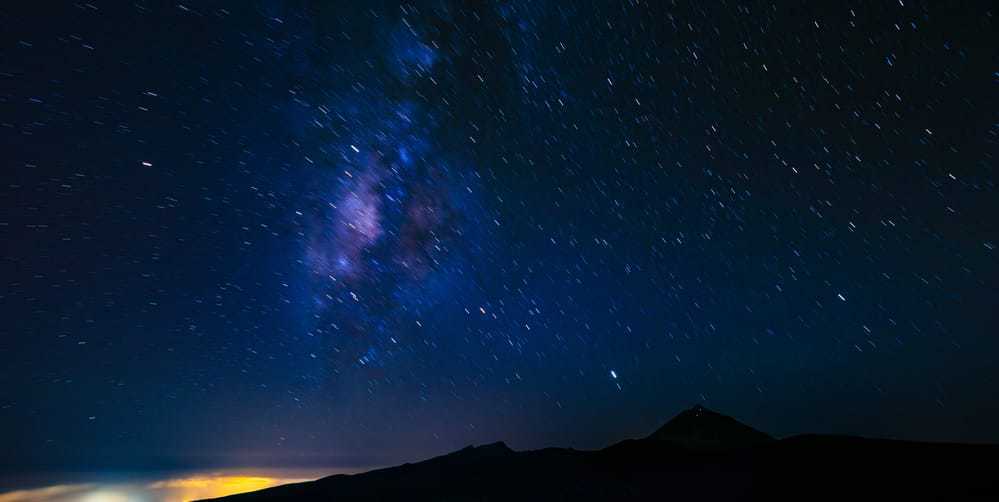
The Sahara Desert, Morocco
The Sahara Desert in Morocco is located in North Africa, covering a massive area of around 3.6 million square miles. It is the largest hot desert in the world and is known for its scorching temperatures, vast sand dunes, and rocky landscapes.
What sets the Sahara Desert in Morocco apart from many other dark sky locations for stargazing is its incredibly clear and uninterrupted view of the night sky. Deserts in general are great for low light pollution and lack of cloud cover.
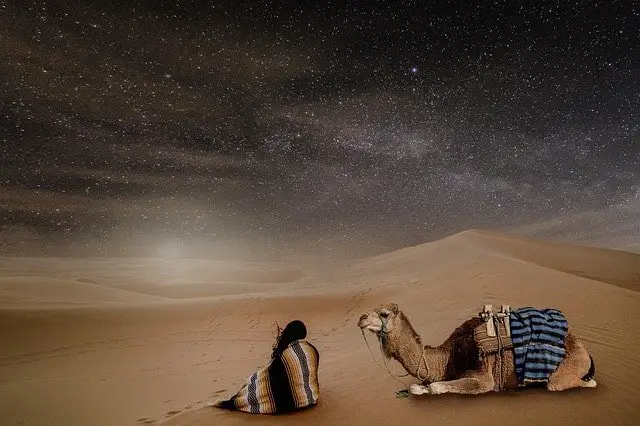
The sky at night in the Sahara illuminates as far as the eye can see. The Milky Way makes a clear statement and constellations like the Big Dipper, Little Dipper, and Cassiopeia can be clearly depicted.
There are tours on offer, so you don’t need to go it alone.
Trysil, Norway
Trysil is a small municipality located in southeastern Norway, roughly 2.5 hours from the capital city of Oslo. This area is known for its breathtaking natural beauty, with majestic mountains, lush forests, and crystal-clear lakes.
In the remote alpine ski resort of Trysil, you’ll find cabins for stargazing. The place is about 3½ hours drive from Oslo, Norway. This is a site for viewing the northern lights.
The best time to view the northern lights in Trysil is between December and March when the nights are longer and darker. The best time to view the northern lights is usually between 9 pm and 2 am. There are Aurora trips that head out to view the northern lights.
Pic du Midi, France
In France, you’ll find the Pic du Midi International Dark Sky Reserve. This is in the French Pyrénées and one of the best places to see beautiful stars at night in Europe.
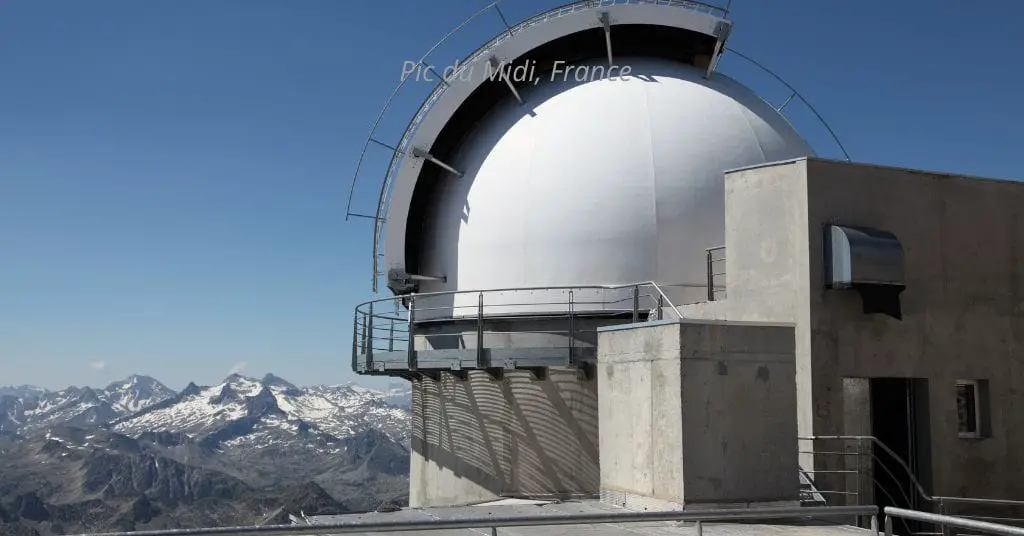
The Pic du Midi Observatory has been in operation since the 1960s and is home to several advanced telescopes and instruments. These include a 1-meter telescope, a solar telescope, and a coronagraph, among others. The observatory is also equipped with state-of-the-art technology for data analysis and research.
You can view the amazing night sky to the north, east, and south from a vast terrace atop the 9439 ft (2,877 m) peak, deep in the French Pyrenees. This is a reserve to preserve the darkest spots on Earth and covers 236 sq mi (612 km2).
There’s a cable car that takes you up to the summit to enjoy stargazing from one of several observation decks.
Brecon Beacons National Park, UK
Brecon Beacons National Park is located in South Wales, UK. It is a vast and beautiful area that spans over 500 square miles, encompassing breathtaking landscapes, waterfalls, and mountains. The park is known for its stunning natural beauty and is one of the few places in the UK where you can experience true darkness, making it an ideal location for stargazing.
The standout feature of Brecon Beacons National Park is its unique combination of natural beauty and lack of light pollution. It’s designated as an International Dark Sky Reserve.
As a leading stargazing site in the UK, this spot is one of the best places in Europe to view the Galilean satellites of Callisto, Europa, Ganymede, and Io orbiting Jupiter.
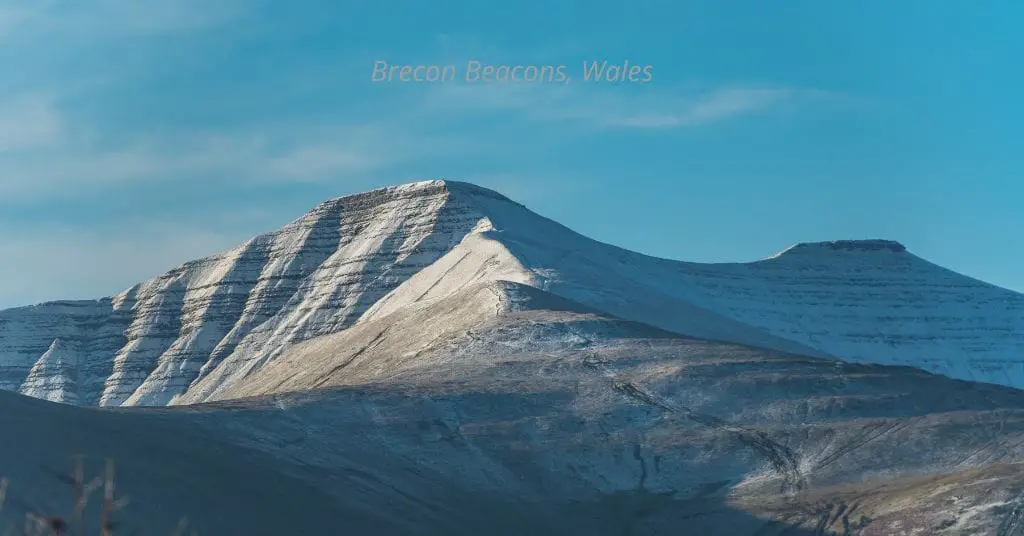
As one of the best star-watching places in Wales, you can view not just the beautiful night sky but a Welsh architectural treasure in Llanthony Priory. You can also hit up a pub nearby because, well, it’s Britain.
Northumberland Dark Sky Park, UK
Northumberland Dark Sky Park is located in the northern part of England, in Northumberland County. The park covers an area of 572 square miles, making it the largest protected Dark Sky area in Europe.
While summer isn’t the ideal time for most stargazing, here you can see meteors and comets along with various sites in the Milky Way at the Kielder Observatory.
Astronomers here offer telescope workshops, family nights, and other events to get the public excited about space.
Galloway Forest Park, UK
Galloway Forest Park is located in the southwest of Scotland, covering an area of approximately 300 square miles, and boasts the largest Dark Sky Park in the UK. It has been awarded Gold Tier status by the International Dark-Sky Association. Dalmellington is the nearest village.
This Scottish stargazing locale sits on a hill, “elevating” its stargazing ability while offering a lovely view of the park itself. While there are some open evenings, you typically need to book a special session per event to gain access to the observatory.
There is accommodation nearby, including campsites, caravan parks, and B&Bs. The Scottish Dark Sky Observatory itself has a small number of rooms available to rent, with shared facilities. Visitors can stay in the observatory’s bunkhouse or in the luxury Pods, which provide a unique experience, allowing guests to sleep under the stars in a comfortable and warm environment.
Even without the best telescope, you can see the Northern lights as well as meteors zipping past. The observatory allows you to see different stellar nurseries and nebulae.
Mont-Mégantic International Dark Sky Reserve, Canada
One of the finest stargazing spots in Canada, this center in Quebec can offer a dazzling array of different viewing opportunities, including different spots in not just the Milky Way but the Andromeda Galaxy.
Keen stargazers choose Mont-Mégantic International Dark Sky Reserve for nighttime viewing for several reasons:
- The reserve is home to Mont-Mégantic Observatory, one of Canada’s largest and most advanced observatories, providing opportunities for amateur astronomers to observe and study celestial objects using state-of-the-art equipment (source: Atlas Obscura).
- It offers a variety of stargazing events and activities throughout the year, including guided night hikes, astronomy workshops, and telescope viewing sessions, making it an ideal destination for amateur astronomers of all skill levels (source: Tourisme Cantons-de-l’Est).
- The reserve is located in a beautiful natural setting, with opportunities for hiking, camping, and wildlife viewing during the day, providing a well-rounded outdoor experience for amateur astronomers and nature enthusiasts alike (source: Tourisme Cantons-de-l’Est).
You get to observe planets, satellites, shooting stars, nebulae, star clusters, the Northern Lights, and much more.
Westhavelland International Dark Sky Reserve, Germany
The Westhavelland International Dark Sky Reserve is unique compared to other dark sky locations for several reasons:
- It is the first International Dark Sky Reserve in Germany, and the largest protected area for stargazing in Europe (source: Dark Sky Reserve Westhavelland).
- Its location in the state of Brandenburg, Germany, provides a unique cultural and historical context for stargazing, with opportunities to explore nearby towns and cities with rich cultural heritage.
- The Westhavelland International Dark Sky Reserve is located in a wetland area, which provides a unique environment for stargazing and wildlife viewing (source: International Dark-Sky Association).
- The reserve offers a variety of stargazing events and activities throughout the year, including guided night hikes, astronomy workshops, and telescope viewing sessions (source: Visit Brandenburg).
- The Westhavelland International Dark Sky Reserve has implemented measures to reduce light pollution, such as promoting the use of energy-efficient lighting and encouraging businesses and residents to use dark sky-friendly lighting fixtures, making it a model for sustainable night skies (source: International Dark-Sky Association).
Located 100 kilometers west of Berlin, you can see everything from the Milky Way to the Aurora Borealis.
Southern hemisphere darkest skies
The southern hemisphere has some of the darkest skies on Earth, which offer stunning views of the Milky Way and other celestial objects.
According to Sky & Telescope, some of the brightest stars in the southern hemisphere include Sirius and Canopus, which are visible from October through May.
The southern hemisphere also offers some of the best locations for viewing auroras, such as Antarctica, Tasmania, and southern New Zealand (source: National Geographic).
The thing to know is that the seasonal constellations in the southern hemisphere are upside-down compared to those in the northern hemisphere, making for a unique stargazing experience (source: Sky at Night Magazine).
Atacama Desert, Chile for the clearest night sky
Lauded as being nowhere better to see the stars, the Atacama Desert spot is about 2500 meters above sea level and 45 minutes by car from San Pedro.
Some claim it’s the most darkest place in the world. It is a desolate spot with the nearest tourist town being Calama.
It’s said that the clearest night sky in the world can be found in the Atacama Desert in Chile. The factors contributing to this include high altitude, low humidity, and lack of light pollution. Plus, the atmosphere is highly stable, allowing for minimal atmospheric distortion.
This is a southern hemisphere option and is one of the best places to see the Milky Way. You can view the southern night sky clearly at this dark location where the landscape makes you feel like you’re walking on Mars.
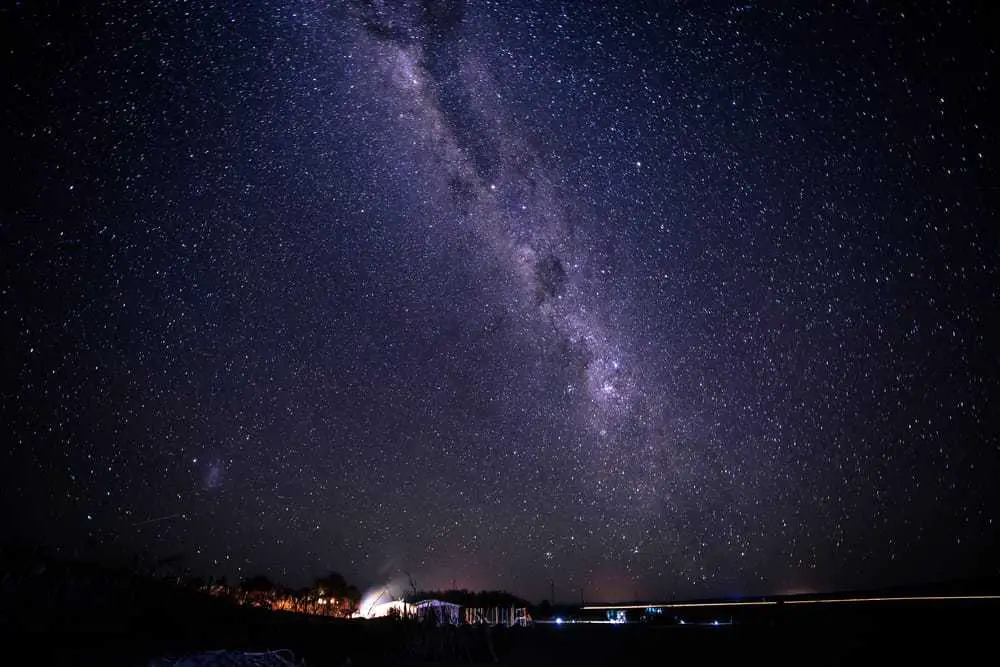
There is an observatory, San Pedro de Atacama Celestial Explorations (SPACE), that is open to visitors.
What’s good about this place? It’s low light pollution and lack of cloud cover, and of course, an observatory that’s open for sessions.
Western Australia Outback
In the southern hemisphere, you’ll find some of the darkest places in the world in the Australian outback…
There are many parks and open spaces in Western Australia that are great for stargazing within an hour or two of the capital city, Perth. Close locations include Gingin and Toodyay. There is an observatory and space places designated nearby.
Known as the Wheatbelt, on a moonless night, the Milky Way will seem bright and endless.
The best national park location for this is the Pinnacles in the Nambung National Park. Travel along the Indian Ocean Drive on the Coral Coast and you’ll capture some great views.
Australia is a place known for its large open spaces with clear skies ideal for stargazing, particularly in the interior of Australia and not confined to Western Australia.
Easter Island (Rapa Nui), Chile
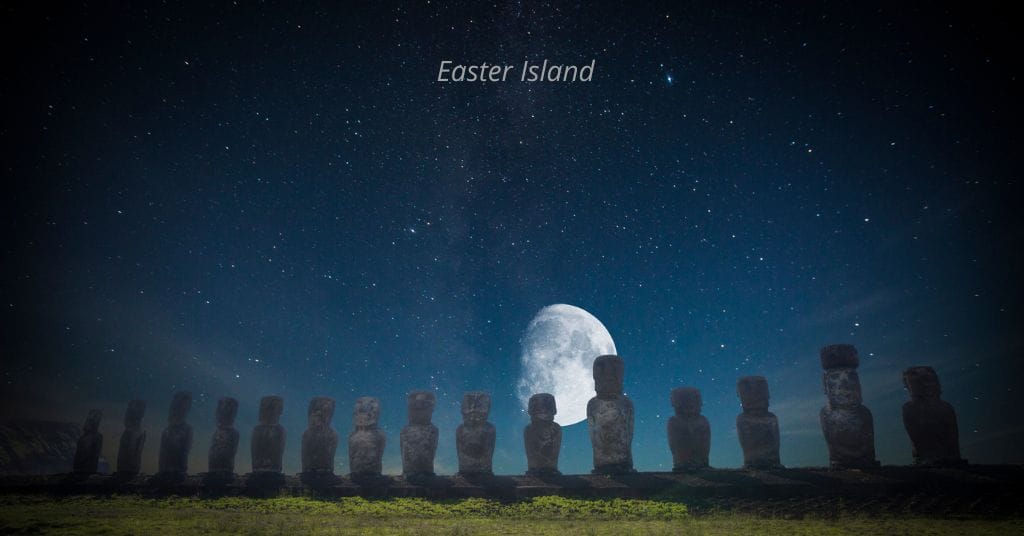
The Polynesians were apt sea voyagers who used the night sky to navigate. On Easter Island, the stargazing interest continues and you can learn about the principles and the key night-sky objects used by navigators.
This place is about 6 hours by plane from Santiago de Chile or from Tahiti (French Polynesia).
NamibRand National Reserve, Namibia
One of the best places to look at the night sky in Africa is the nature reserve of Namibia, located in the eastern portion of the Namib desert. It has low humidity, which has two benefits: not making you feel like you’re melting from sticky hot conditions and providing a clear view of the night sky.
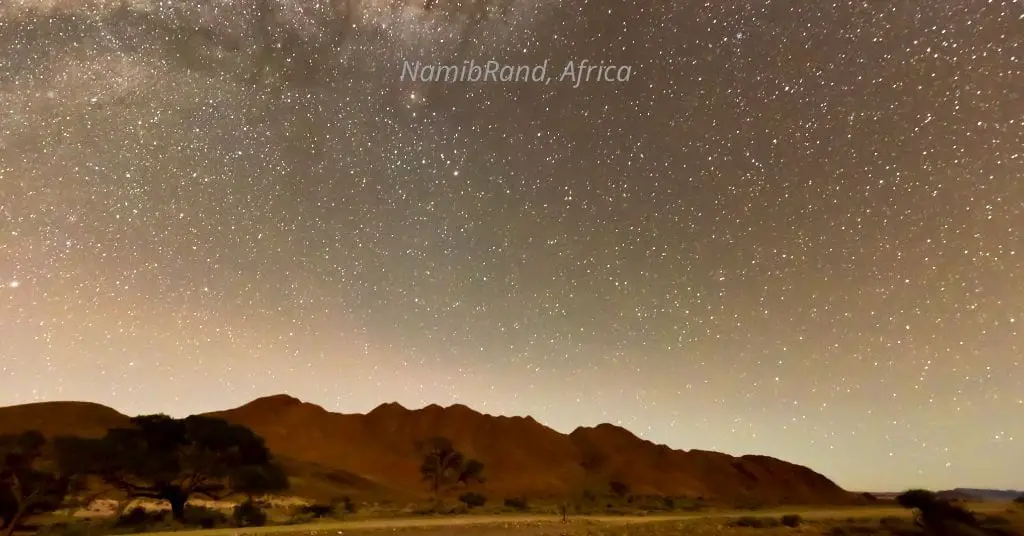
NamibRand is a private nature reserve in the south of Namibia and is said to be Africa’s only International Dark Sky Reserve. It is another southern hemisphere option.
The site is about a 6-hour drive from Windhoek, the closest major city.
The reserve “lies in one of the naturally darkest, yet accessible, places on Earth” according to the International Dark-Sky Association.
It should be noted that this location is located relatively far out in the desert. The closest town is Maltahöhe, which is roughly 100 kilometers away. The area offers impeccable views of celestial bodies in the center of our galaxy and the Magellanic Clouds at the Sossusvlei Desert Lodge.
Aoraki Mackenzie International Dark Sky Reserve, New Zealand
New Zealand is another amazing night sky viewing place in the southern hemisphere. At the Aoraki Mackenzie International dark sky reserve, you can take advantage of Mt John Night-time Observatory Tours and see different parts of the Milky Way and local features such as Mount Cook and Lake Tekapo.
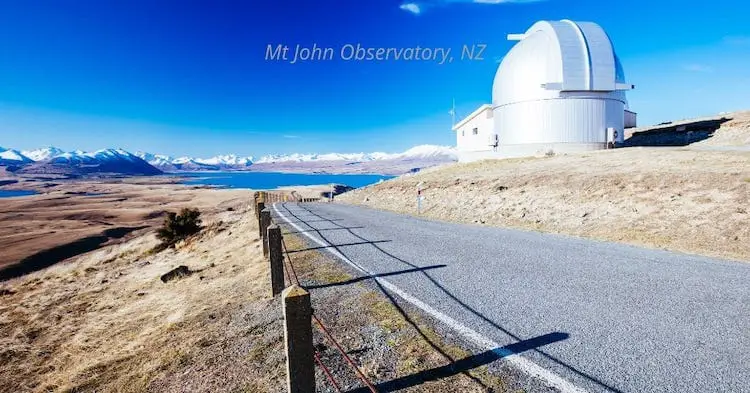
Warrumbungle National Park, New South Wales, Australia
Near Coonabarabran in central western NSW is Warrumbungle National Park. Not only is it Australia’s first Dark Sky Park but also the first in the southern hemisphere.
Coonabarabran is a small country town on the edge of Warrumbungle National Park.
What you’ll find here:
- Low humidity
- High altitude
- World-class astronomy research facility at Siding Spring Observatory.
Other best stargazing spots — Find near me
Many other locations exist that can give you a great clear night sky view.
There might be a place close to you
Wherever you are, you’ll want somewhere away from light pollution.
You may have to go farther afield than your neighborhood, with light pollution currently impacting the abodes of 80% of North Americans.
Finding the Dark Sky Places near me
If you are wondering about places without light pollution near me then here’s a tool to help…
Find a designated dark sky spot near me at darksky.org
Where’s Your Dark Spot for Stargazing?
You may have to travel some miles to find a dark spot on Earth or perhaps you are lucky and only need to go a short distance to appreciate star brightness in a dark sky.
“Look up at the stars and not down at your feet. Try to make sense of what you see, and wonder about what makes the universe exist. Be curious.”
~ Stephen Hawking
It may become the Holy Grail of astronomy given the extent of light pollution on Earth today. Earth’s nights are becoming ever brighter with modern development, making it increasingly harder to find good spots to view and study celestial objects.
Already, light has impinged on established astronomy research institutions, like the Sydney Observatory in Australia, which no longer operates for research because of light impingement.
What about joining the International Dark-Sky Association (IDA) and does it cost to join
Becoming a member supports the organization’s mission to preserve and protect the nighttime environment and our heritage of dark skies through quality outdoor lighting.
Joining the IDA gives you access to educational resources and opportunities to team up and connect with other Dark Sky advocates.
You can volunteer to participate in local and global efforts to reduce light pollution and protect dark places on Earth.
There is a cost to join the IDA, which varies depending on the membership level. As of April 2024, the IDA offers individual memberships starting at $35 per year (source: IDA).
Information Sources
International Dark Sky Places Conservation Program | University of Hawaii: About Mauna Kea

